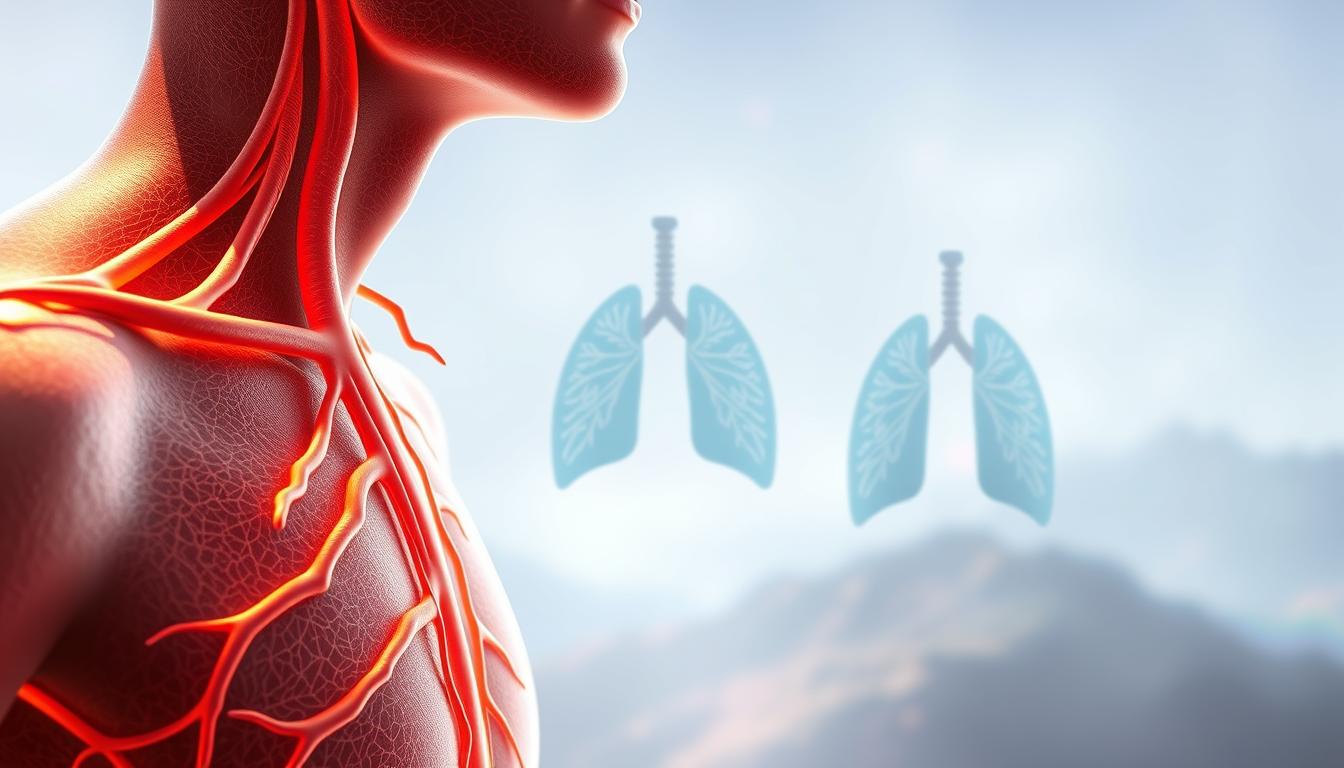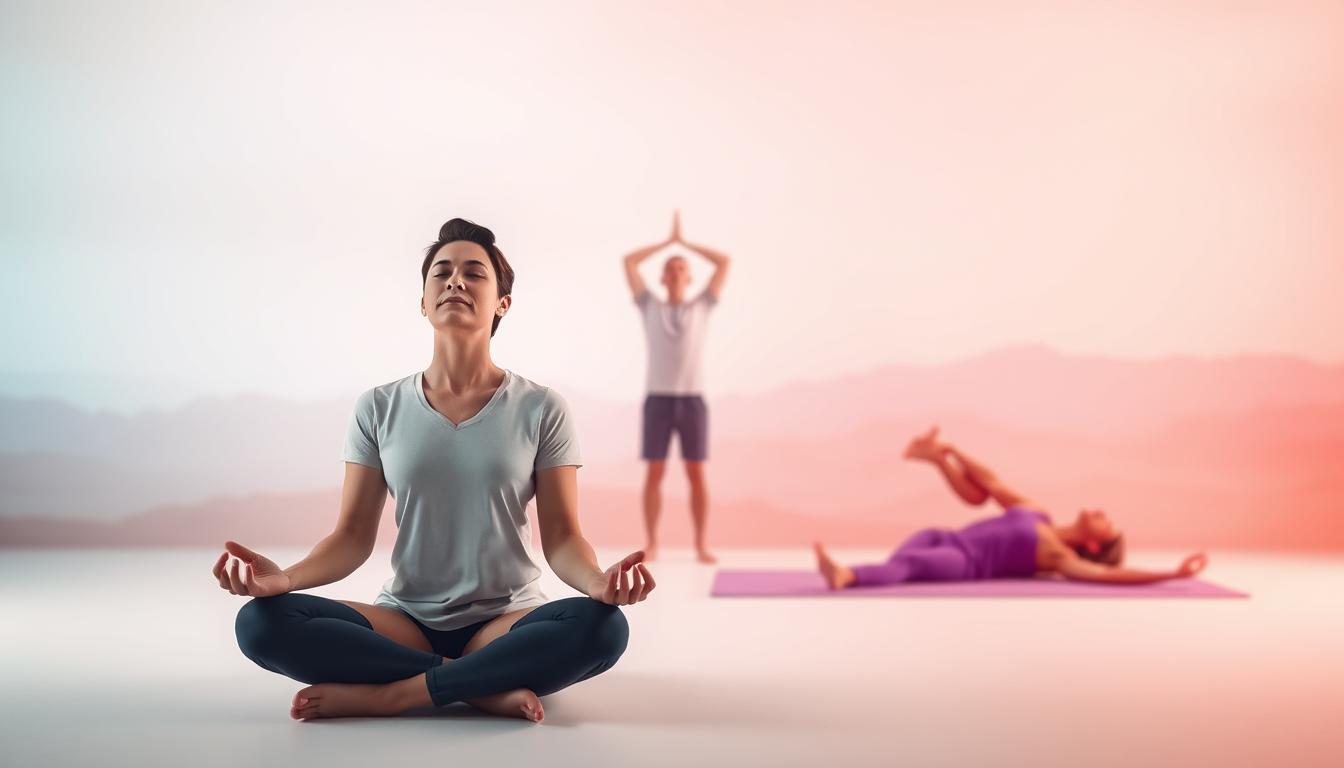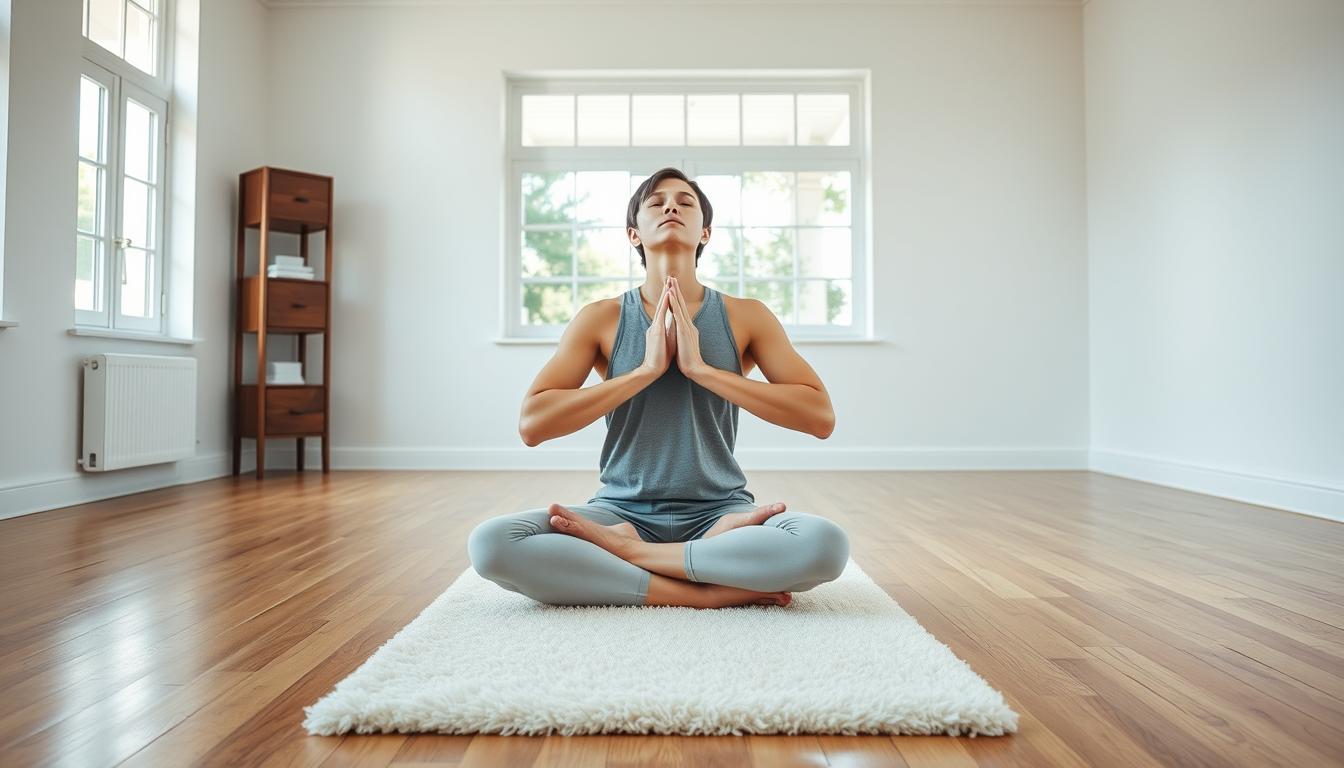Every day, you take around 20,000 breaths, yet most go unnoticed. What if those breaths could unlock better health, sharper focus, and deeper calm? Research shows intentional breathing techniques—known as breathwork—can do just that.
Stanford studies reveal how controlled breathing activates the parasympathetic nervous system, countering chronic stress. Dr. Melissa Young notes this practice helps regulate heart rate and blood pressure almost instantly. Athletes, including Peloton instructors, use it to boost performance and mindfulness.
No equipment or experience is needed. Simple techniques fit into any routine, offering benefits like reduced anxiety and improved sleep. A 2023 meta-analysis confirms its mental health advantages, making it a tool for both immediate relief and long-term resilience.
Key Takeaways
- Breathwork reduces stress by activating the parasympathetic nervous system.
- Studies link it to better heart health, focus, and sleep quality.
- Peloton and athletes use it for performance and mindfulness.
- Accessible to all ages—no special equipment required.
- Offers both quick relaxation and long-term mental health benefits.
What Is Breathwork?
Ancient traditions reveal how intentional breath control transforms health. Unlike passive inhales, breathwork uses deliberate patterns to influence the body and mind. Its roots trace back 3,000 years to Ayurveda and Traditional Chinese Medicine, where it was used to balance energy and treat ailments.

Definition and Historical Roots
Breathwork encompasses techniques like Nadi Shodhana (alternate nostril breathing) and Lion’s Breath from yoga. These practices weren’t just spiritual—they were early medicine. Today, they’re adapted for trauma therapy (Holotropic) and even surgical prep (Five-Finger Breathing).
Modern studies, like those from UCLA, show how controlled breathing aids pain management. Dr. Melissa Young calls it a “bridge between body and mind,” activating calm through the parasympathetic system.
How Breathwork Differs from Everyday Breathing
Normal breathing is automatic, often shallow. Diaphragmatic breathing—deep belly breaths—engages the diaphragm fully. This lowers blood pressure, especially in lung conditions.
Chronic stress keeps many in “fight-or-flight” mode. Breathwork counters this by focusing on slow, rhythmic inhales. For example, exhaling longer than inhaling triggers relaxation.
Note: Those with asthma or heart issues should consult a doctor before starting.
The Science Behind Breathwork
Controlled breathing isn’t just about relaxation—it rewires your body’s stress response. Research reveals how specific patterns influence the nervous system, heart rate, and even hormone levels. This isn’t guesswork; studies from Stanford and UCLA back these effects.

How Breathwork Affects the Nervous System
Your body has two modes: fight-or-flight (sympathetic) and rest-and-digest (parasympathetic). Shallow, rapid breaths trigger stress signals. Slow, deep breathing flips the switch to calm.
A 2017 Stanford study found rhythmic breathing synchronizes brainwaves, reducing anxiety. Dr. Raj Dasgupta notes this lowers blood pressure by 10–15 points in minutes. The key? Longer exhales activate the parasympathetic nervous system.
The Role of the Vagus Nerve
This cranial nerve acts like a brake pedal for stress. When stimulated by deep breathing, it slows your heart rate and improves oxygen flow. CO2 buildup from breath-holding also helps—it dilates blood vessels, easing pressure.
“The vagus nerve is your body’s natural reset button,”
explains Dr. Young. Practices like humming or cold exposure boost its effects.
Breathwork and Stress Hormones
Cortisol levels drop with consistent practice. A 10-week trial showed 4-7-8 breathing cut stress markers by 27%. It also improves sleep quality by calming the nervous system before bed.
| Technique | Effect | Study Support |
|---|---|---|
| 4-7-8 Breathing | Reduces cortisol | University of Arizona, 2023 |
| Diaphragmatic Breathing | Lowers blood pressure | American Heart Association |
| Alternate Nostril | Balances heart rate variability | NIH Clinical Trial |
Modern life keeps many stuck in fight-or-flight. Just five minutes of intentional breathing daily can counteract this. Start small—even three focused breaths shift your response.
Key Benefits of Breathwork
Imagine unlocking powerful health benefits simply by changing how you breathe. Research shows intentional techniques reduce stress, improve cardiovascular function, and sharpen mental clarity. Whether you seek relaxation or peak performance, breathwork adapts to your needs.

Reducing Stress and Anxiety
A 10-week trial found cyclic sighing cuts cortisol by 37%. Slow exhales activate the parasympathetic system, dialing down anxiety. Peloton coaches use this to help athletes recover faster.
Improving Heart Health and Blood Pressure
Box breathing’s 4-4-4-4 pattern lowers systolic blood pressure by 10 points. Coherent breathing synchronizes heart rhythms, reducing strain. Dr. Lavretsky’s migraine studies highlight its vascular perks.
Enhancing Focus and Cognitive Function
Frontiers in Psychology linked diaphragmatic breathing to 14% better memory recall. Nasal breaths boost interbrain communication, aiding decision-making.
Promoting Better Sleep
The 4-7-8 technique triggers melatonin release, easing insomnia. A 2025 meta-analysis confirmed nasal breathing’s role in deeper sleep cycles.
| Technique | Primary Benefit | Evidence |
|---|---|---|
| Cyclic Sighing | Mood boost | 2023 Cell Reports |
| Box Breathing | Lowers blood pressure | American Heart Association |
| 4-7-8 Method | Sleep quality | 2025 Sleep Medicine Review |
Just five minutes daily can rewire your stress response. Start small—your mind and body will thank you.
Popular Breathwork Techniques
Navy SEALs and yogis alike rely on specialized breath control methods. These four evidence-backed approaches help manage stress, sharpen focus, and restore balance. Each suits different needs—from tactical calm to bedtime relaxation.

Diaphragmatic Breathing (Belly Breathing)
Ideal for beginners, this foundational technique engages the diaphragm fully. Dr. Young recommends starting here to build awareness.
- Place one hand on your belly, the other on your chest
- Inhale deeply through your nose for 4 counts
- Feel your abdomen rise while chest stays still
- Exhale slowly through pursed lips for 6 counts
UCLA research suggests 5-10 minutes daily improves lung capacity and lowers stress hormones.
Box Breathing (Square Breathing)
Used by elite military units, this pattern creates mental clarity under pressure. The equal ratios make it easy to remember.
- Inhale through your nose for 4 seconds
- Hold the air for 4 seconds
- Exhale through your mouth for 4 seconds
- Pause empty for 4 seconds
“Four-count breathing became our secret weapon during high-stress ops,”
reports a retired Navy SEAL instructor.
4-7-8 Breathing for Relaxation
This bedtime favorite reduces anxiety in 89% of users. The extended exhale triggers deep calm.
Follow this ratio:
- Inhale quietly for 4 counts
- Hold for 7 counts
- Exhale audibly for 8 counts
Repeat for 4 cycles max when starting. The American Heart Association warns against overdoing breath-holding initially.
Alternate Nostril Breathing (Nadi Shodhana)
Rooted in Ayurveda, this energy-balancing practice enhances focus. A 2022 study showed 12% better concentration after 10 minutes.
- Close your right nostril with your thumb
- Inhale left for 4 counts
- Close both nostrils, hold for 2
- Open right, exhale for 6
- Repeat opposite side
Morning sessions work best for mental clarity throughout the day.
Note: Those with respiratory conditions should consult a doctor before trying breath-holding techniques.
Breathwork for Specific Goals
Tailored breathing methods address distinct needs—from panic attacks to marathon prep. Matching the right techniques to your goals maximizes benefits. Whether calming stress or boosting endurance, science-backed patterns deliver results.

Calming Techniques for Stress Relief
Cyclic sighing resets your nervous system in 30 seconds. A 2023 study found it outperforms mindfulness for mood elevation. Dr. Fincham’s meta-analysis confirms its response to anxiety.
Try this:
- Inhale deeply through your nose
- Take a second, shorter inhale to fill lungs fully
- Exhale slowly through your mouth
Repeat 3-5 times. This practice lowers cortisol levels, soothing stress.
Energizing Techniques for Focus
Lion’s Breath sharpens mind clarity before high-stakes tasks. Peloton coaches pair it with HIIT recovery for sustained energy.
“Coherent breathing syncs heart rhythms, enhancing mental stamina,”
Steps:
- Inhale for 5 seconds
- Exhale for 5 seconds
- Maintain this rhythm for 2-5 minutes
Breathwork for Athletic Performance
Pursed-lip breathing aids asthma patients during exercise. It stabilizes heart rate during sprints or stair climbs.
| Technique | Use Case |
|---|---|
| Physiological Sigh | Instant calm between sets |
| Box Breathing | Pre-race focus |
Advanced athletes use “air hunger” drills to train CO2 tolerance. Always consult a coach for intense body conditioning.
How to Start a Breathwork Practice
Mastering breathwork begins with small, intentional steps. Unlike passive breathing, a structured practice unlocks its full benefits. Dr. Melissa Young recommends starting with just 5-10 minutes per day—a manageable commitment that yields measurable results.

Finding the Right Technique for You
Not all techniques suit every need. If stress relief is your goal, cyclic sighing offers quick calm. For focus, try coherent breathing’s 5-second rhythm. Peloton’s guided classes demonstrate proper form for beginners.
Track your progress in a journal. Note how different methods affect your mind and body. Over time, you’ll identify which patterns work best for your lifestyle.
Creating a Consistent Routine
Start with three cycles of your chosen method, gradually building to 10-minute sessions. Pair morning practice with sunlight exposure for energy, or evening sessions with dim lighting for sleep prep.
“Progress happens through regularity, not intensity,”
Combine breathwork with a body scan meditation for deeper grounding. This dual practice enhances awareness of physical sensations during breathing.
Common Mistakes to Avoid
The American Heart Association warns against overexertion—never force breath-holding beyond comfort. Wandering thoughts are normal; the goal isn’t an empty mind but focused awareness.
Environmental cues reinforce consistency. Designate a quiet space where you can practice daily. This simple way of structuring your life around breathwork ensures lasting health improvements.
Expert Tips for Effective Breathwork
Small adjustments can transform your practice from good to powerful. Whether you’re new to breathwork or refining your technique, these evidence-backed strategies enhance results. They come from top researchers and seasoned practitioners.
Setting Up Your Environment
Your space shapes your response to breathwork. Choose a quiet corner free from phones and distractions. Soft lighting helps signal relaxation to your mind.
Dr. Gerbarg recommends starting with coherent breathing—the safest foundational practice. Try this setup:
- Use a comfortable cushion or chair
- Set a timer so you’re not clock-watching
- Keep the room slightly cool (68-72°F)
Combining Breathwork with Meditation
Pairing breath control with meditation deepens both practices. Five-finger breathing triggers endorphin release, ideal before stressful events. Trauma therapists often combine it with body scans.
“Box breathing with mantra repetition creates dual focus—anchoring both breath and thought,”
For beginners, try this sequence:
- Begin with 5 minutes of diaphragmatic breathing
- Transition to a simple “inhale calm, exhale tension” mantra
- End with progressive muscle relaxation during exhales
Listening to Your Body’s Signals
Your physiology gives clear feedback during breathwork. Dizziness means slow down—it’s your body requesting a pause. Dr. Wei cautions against rapid techniques that may spike anxiety.
Key signs to notice:
- Tingling hands: Breathe more slowly
- Yawning: Your body seeking oxygen
- Warmth spreading: Parasympathetic activation
Track these responses in a journal. Over time, you’ll learn your ideal pace and way of practicing. Remember—gentle consistency beats forceful intensity every day.
Conclusion
Breathwork offers a simple yet powerful way to transform your health. Research confirms its benefits, from lowering blood pressure to easing stress. Best part? It’s free and always available.
Start small—just two minutes daily. Peloton’s beginner guides make it easy. Consistency matters. Six weeks of practice can improve heart rate variability, per studies.
Pair it with journaling or join a challenge for accountability. Your body and mind will thank you. As Dr. Young notes, joy fuels resilience. Let breathwork be your anchor in daily life.